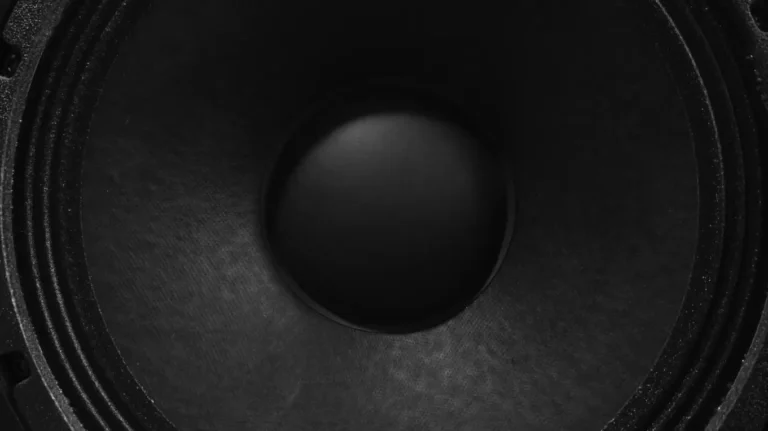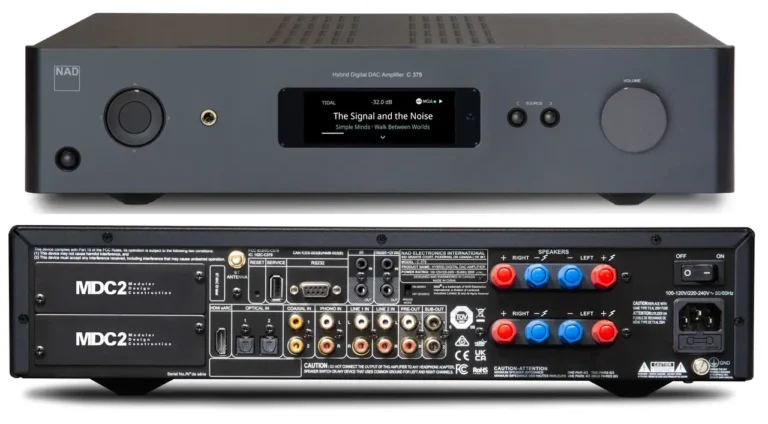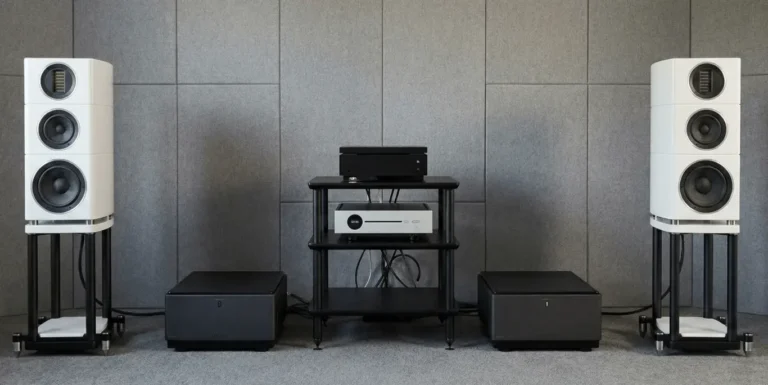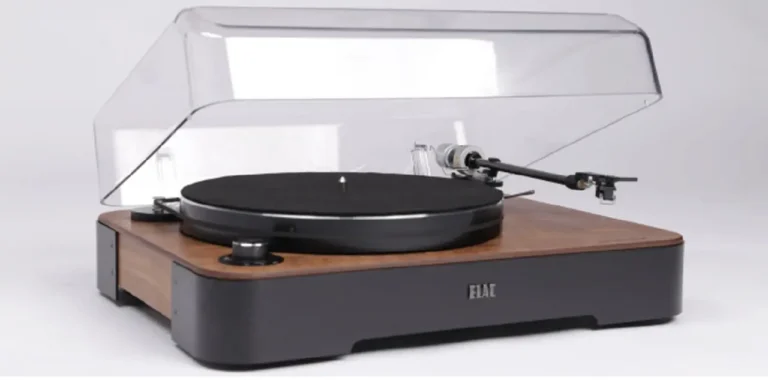Audiolab 9000A Amplifier and 9000CDT CD Transport Review
Audiolab 9000A: Audiolab’s classic amplifiers have been highly regarded since the early ’80s. In 1982, the debut model 8000A made a lot of noise in the Hi-Fi market and for a long time, became a reference in the segment of mid-budget components. It seems that after forty years, the company decided to repeat this trick, but climbing up a notch.
The new 9000 series has taken the position of the lineup’s flagship, and its task is to take Audiolab’s sound quality to a new level. The series currently consists of two components: the 9000A integrated amplifier with digital inputs and the 9000CDT digital source with CD transport. We will get to know them.
Details That Make the Difference
The concept of the 9000 series seems very reasonable, practical, and balanced, in the spirit of Audiolab. The developers took the functionality of the 6000 series as a basis, combined it with the sound technologies of the 8300 series, and then tried to bring the result to perfection using top-end components and design solutions traditionally used in high-end equipment. And the creators of the new series did not forget about the design either.
The aesthetics of the new Audiolab components are perfectly tuned to the millimeter and semitone. In appearance, the continuity of generations and completely new, fresh notes are observed. Laconic cases with a characteristic rough matte surface of the front panels, complemented by round control knobs, are responsible for the classic component. The arrangement of the three round manipulators on the front panel of the amplifier is the same as in other models, so the owners of Audiolab with experience not only identify the new product at a glance but also do not get confused by the controls.
The aura of solidity and high value is formed by the smallest details: a logo neatly cut into the thickness of the front panel and not conspicuous, perfect edge processing, and stability of gaps along the contour. There is a feeling that even the screws used to assemble the cases were chosen from a dozen possible options by specially trained designers – the appearance turned out to be so harmonious.
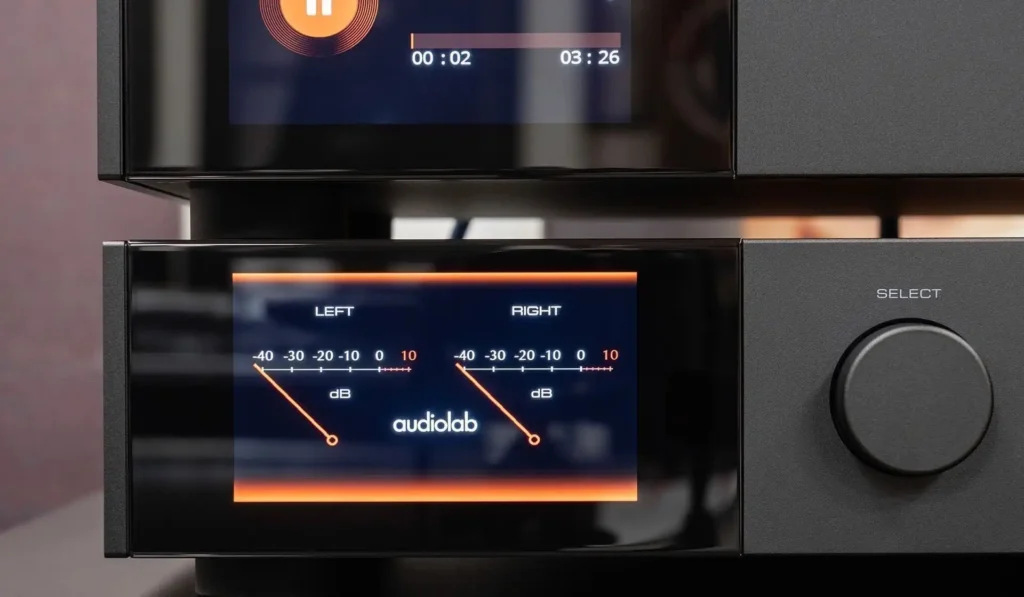
The 9000 series’ components are dominated by large 4.3-inch LCDs. They are made using IPS technology and have excellent contrast, really dark blacks, and high brightness. If the developers had saved even a little on this detail, the components would not look so perfect. The fact that the displays are not touch-sensitive, I would also attribute to the pluses: a beautiful glossy picture covered with fingerprints will not look expensive, and all functions can be controlled from the remote instead of messing up the components.
Another joy for aesthetes is the ability to choose what exactly will be displayed on the display. The main “home” screen shows all the necessary information about the operating mode of the device and a small animation that makes it clear whether playback is in progress.
In addition, you can display paired arrow indicators, indicators in the form of LED tracks, or an animated Audiolab logo on the screen. The alternative to all of the above is the great black cosmic nothingness that can be seen completely off-screen.
You May Like: Musetec MH SA001 Preamplifier Review:
By the way, I tried to hear if turning off the screen has an effect on the sound and did not find a difference. Unless the very fact of the absence of visual stimuli helps to focus on the sound. Therefore, turning off the display is a matter of aesthetic perception and comfort of use.
Iron is top!
Getting to know the hardware of the 9000 series components should start with the main thing – the 9000A amplifier circuit. It is based on the classic Audiolab configuration that works in the AB class. A feature of proprietary circuitry is a complementary feedback topology that provides an exceptionally linear response, regardless of the operating temperature of the transistors at any given time.
As a result, both at low volume and under load, the amplifier sounds equally clear and accurate. Also, the original Audiolab circuit has a high damping factor, which allows you to control a complex load. Output power into 8 ohms is 100 watts per channel and reaches 160 watts into 4 ohms – the highest values among all integrated amplifiers of the brand.
For confident processing of peaks in energy consumption, the power supply is equipped with a block of large-capacity capacitors, 15,000 microfarads per shoulder for each channel (60,000 microfarads in total!), As well as a massive 320 VA toroidal transformer.
Careful selection of components helps to bring the concept to perfection, adherence to the principles of minimizing audio signal paths not only in the circuit, but even at the level of drawing printed circuit boards, and a precision stepped volume control implemented in the form of an all-analog circuit that reduces the impact on sound. The design of the amplifier implements a whole range of measures to eliminate the cross-influence of the functional blocks of the amplifier on each other, which allows you to minimize distortion and coloration of the sound, thereby increasing the resolution.

Traditionally for Audiolab, the 9000A amplifier has the widest possible switching capabilities. A special knob on the front panel switches modes: full amplifier, only preamplifier, and a special PRE-POWER mode that allows you to use the preamplifier and power amplifier separately from each other, including additional audio processors between them.
With such a scheme, the user is not limited in any way in terms of system upgrades and can even easily combine the stereo system with a home theater system. There is also a complete set of inputs: in addition to three analog unbalanced inputs, there is one balanced input, two digital optical and coaxial inputs, a USB-B input, a phono input, and Bluetooth. There is also a headphone output.
And absolutely all functions are implemented at the highest level: Bluetooth supports aptX HD and LDAC codecs; the headphone amplifier is assembled according to a current feedback circuit and supports models with impedance up to 600 ohms; the built-in MM-type phono stage also has a current feedback circuit, is assembled on JFET transistors and has an extremely low noise level; The digital circuit is based on the top-end ES9038Pro DAC with the ability to configure digital filters, complemented by full MQA decoding.
Check Out: Gustard x30 review
This attitude of Audiolab towards additional functions should be especially noted. For example, many manufacturers of Hi-Fi components do not even try to implement the digital part of integrated amplifiers at the highest level. As a rule, built-in DACs either perform a nominal function and are suitable for supplying sound from a TV or a game console, or they put good-quality middling microcircuits in amplifiers that give sound corresponding to entry-level Hi-Fi components, while the amplifier itself belongs to the middle or upper category.
Against the background of this trend, Audiolab’s approach looks more honest and customer-oriented. A direct continuation of this thought is the second component of the system – digital transport.
By integrating a high-end DAC into the amplifier, the developers got rid of the signal source, making it a purely digital transport. This, firstly, significantly reduced its cost (the source turned out to be almost half the price of the amplifier), and secondly, it made it possible to implement the main function of the 9000CDT, CD playback, with the highest quality.
A high-precision drive, together with an individual power supply unit, is installed in a closed compartment with protection against electromagnetic interference and vibration isolation. The reader mechanism with an ultra-precise laser focusing system is additionally equipped with a data buffer that ensures stable and uninterrupted playback of even older, worn, and scratched discs. The SPDIF digital outputs are driven by a precision clock that minimizes jitter and is equipped with a low-noise differential power supply.
The 9000CDT has no other digital outputs besides optical and coaxial, and the USB-A port is used to implement an additional function – a file player. However, this function has some limitations: external drives must be formatted in FAT, and the list of supported formats is limited to WAV, AAC, WMA, and MP3 with a sampling rate of no higher than 48 kHz (which will be converted to 44.1 kHz before being sent to the SPDIF output).
In short, if you plan to listen to files, it is better to use a PC connected directly to the 9000A via USB, especially since the DAC built into the amplifier is Roon Tested certified and will provide guaranteed high quality both when listening to your home music library from a NAS, and when using the same Tidal with MQA master files.
Audiolab 9000A Amplifier and 9000CDT CD Transport Test
During testing, I used four pairs of speakers with different performance characteristics. The first pair of speakers in the test was the commemorative Mission 700s, which match so well with Audiolab components visually that they look like a single set.
This bundle was surprising with a very voluminous sound stage and a well-developed bass foundation. The presentation of musical material turned out to be very solid, and monolithic, but at the same time clear and focused enough to distinguish between individual instruments and rhythmic patterns in the composition.
In general, the sound came out quite dense, rocker. Performance-wise, the Mission 700 is no simple load: 86 dB sensitivity, 8 ohms, and a maximum power consumption of 150 watts. The volume on the amplifier did have to be turned up a little more than on other speakers, but there was no hint that the 9000A was having difficulty in this situation.
The Mission ZX-1 was next, a shelf speaker from the top series. The sensitivity of these speakers is higher, the power consumption is less, and the speakers are more advanced and high-tech. Against the backdrop of the 700s, they look like babies and the scale of the sound picture gives the appropriate, typically shelf.
At the same time, the refinement of the MF/HF range, transparency, the filigree rendering of individual nuances, and the completeness of timbre transmission in this model are implemented at a higher level, which was quite obvious in conjunction with Audiolab. For some musical genres, of course, I wanted to connect a subwoofer, but the rest could only be surprised at how expressive and accurate these kids are capable of sounding with a decent source and amplifier.
In search of great sound and at the same time – the limits of the amplifier’s capabilities, the Mission QX-5 MKII floor standers were set. With a sufficiently high sensitivity and an impedance of 4 ohms, they are equipped with a large 300 mm woofer and consume up to 200 watts at peak. A big sound was undoubtedly found – the symphonic works sounded more realistic, and the stage turned out to be big. At the same time, the limits of the amplifier’s capabilities could not be identified. It is also worth noting that, in conjunction with the 9000A, the low frequencies of these floor standers were surprisingly detailed and accurate.
The fourth pair of speakers is 705 Signature: another anniversary shelf speaker, but from Bowers & Wilkins. They belong to a higher price category than all previous models, due to which they have a sufficient degree of transparency to show the merits and demerits of the components if any.
In this case, the combination turned out to be quite harmonious and balanced in terms of the quality and character of the sound. Audiolab components made it possible to feel the saturation of the middle, the transparency of the highs, and the well-recognized tight and dynamic bass.
Not a single pair of speakers could unbalance the 9000A – in terms of low-frequency grasp, it can even compete with the best representatives of the D class. scores.
Obviously, within the declared performance characteristics, the amplifier is quite capable of coping with the task, which means that for listening to music at home at an adequate volume in a small or medium-sized room, the list of suitable acoustics will be as wide as possible.
Sound Experience
Perhaps the main property of the Audiolab 9000 system, which remained unchanged on any acoustics, is the ease and unobtrusiveness with which the components reproduced musical material. There is not the slightest hint that some passages were given to the system with difficulty – quite the opposite, even complex material was reproduced confidently, accurately, without visible effort.
There was no noticeable or characteristic coloring of the sound. No matter how you sort through the test tracks, it is impossible to understand whether it is class AB or class D, the DAC is based on a chip from ESS or, say, from Texas Instruments. At the same time, it is 100% clear that listening to music is pleasant, interesting, and comfortable.
The components of the 9000 series proved to be musical and allowed us to feel the beauty of any genre. When playing dance music, rock, and metal, they are dynamic and do not lose control even on fast drums and bass, making it possible to fully experience the energy and drive. In melancholic and calm tracks, whether jazz or electronic, they perfectly convey the mood and atmosphere, clearly spelling out even the quietest and most insinuating notes that give you goosebumps.
It is also important that, regardless of the resolution and class of acoustics, the most important component was preserved – musicality. All the key melodic moves, the mood, and the energy of the performance were perfectly readable, the music sounded interesting and evoked a lot of emotions.
The higher the class of speakers, the more nuances were heard, and the impression from the music was more vivid and complex, but the essence and main message of the composition were always conveyed. The same can be said about the reproduction of materials of different quality. More modern, clean,n and detailed recordings sound spectacular and realistic, but recordings made 60-70 years ago, which are not able to surprise with either resolution, frequency, or dynamic range, are no less impressive.
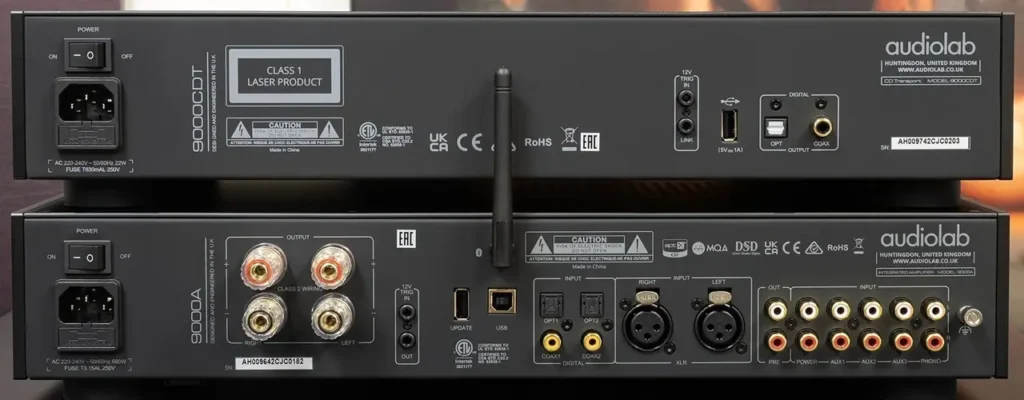
All these are signs of the English sound school, which combines a fairly high resolution and accuracy with an expressive music lover’s presentation, which does not favor analytics and dissecting music into components.
Conclusion
The 9000 series, although it occupies the highest position in the AudioLab lineup, is more in line with the middle group in terms of price. Many brands offer middle-class models for the same money, which have the appropriate sound character – better than budget equipment, but sooner or later prompt thoughts about switching to top-end components.
At the same time, the sound of the Audiolab 9000A does not have pronounced signs of a mid-budget Hi-Fi. In addition to high detail, excellent dynamics, and the ability to confidently work out complex musical compositions of different genres, they demonstrate the richness of timbres and a certain aristocracy, which are rather typical of the top segment.
In terms of functionality and switching capabilities, there are also no significant signs of savings and compromises. Is it possible to add a USB output to the transport and an XLR output to the amplifier? this is not so critical. More importantly, there is a DAC and a phono stage on board that do not provoke the user to purchase additional components – at least immediately. Plus, it is possible to connect an external power amplifier for especially powerful speakers. In sum, these opportunities cover all pressing issues for many years to come.
When getting acquainted with the 9000 series, the lack of a network player in the series was somewhat embarrassing, but a careful study of the universal remote control, which is responsible for controlling all the components of the series, allows us to conclude that it will not be necessary to wait for the expansion of the line for a long time. In any case, next to the CD and A buttons, which activate the control of the CD transport and the amplifier (Amplifier), respectively, there is also the N button – it’s not otherwise a network player (Network Streamer). Let’s wait and at the same time hope that the cost of the streamer will be as affordable as the cost of CD transport.
Audiolab 9000A Amplifier and 9000CDT CD Transport Pros and Cons
Pros
musical and expressive sound, favorable price/quality ratio, high output power, and wide amplifier switching options, CD drive copes well with problematic discs
Cons
limited ability to play files from USB media, transport-amplifier switching is limited to basic SPDIF interfaces, no balanced output for connecting external power amplifiers.
Audiolab 9000A Amplifier and 9000CDT CD Transport Price:
You can get both the Audiolab 9000A Amplifier and 9000CDT CD Transport for approximately £2,988.
Specification Audiolab 9000A Amplifier and 9000CDT
Amplifier 9000A
Output power: 2x 100W into 8 ohms or 2x 160W into 4 ohms
Frequency range: 20-20000Hz (+\-0.3dB)
Distortion: less than 0.002% (at 1 kHz, 50 W, 8 ohms)
Signal-to-noise ratio: more than 110 dB
DAC: ES9038Pro
Maximum DAC resolution: 32bit/768kHz and DSD512 on USB input
Bluetooth: Version 5.1, aptX/aptX HD/AAC/LDAC codecs
Inputs: 3x unbalanced stereo, balanced stereo XLR, 2x coaxial SPDIF, 2x optical SPDIF, USB-B, power amplifier input
Outputs: headphones, pre-out
Additional interfaces: 12V trigger
Dimensions: 444 x 342 x 89 mm
Weight: 9.4 kg
Digital Transport 9000CDT
Compatible media: CD-DA, CD-R/RW, USB-HDD, USB-Flash
USB storage media playback: WAV, AAC, WMA, MP3 (up to 48kHz)
Outputs: SPDIF (coaxial and optical)
Dimensions: 444 x 322 x 89
Weight: 5.74 kg
Results from some other websites:
According to: Sound Advice
Audiolab has been developed and refined, and the 9000A is right up there with the very finest the company has made. It’s a powerful, superbly engineered, and fine-sounding integrated amplifier packed into the company’s slender form, and with a winning mix of flexibility and performance, plus absolute ease of use. Whether you want to drive compact monitor speakers or big floor standers, it’ll do the job in real style and has the wherewithal to sit at the heart of even complex systems mixing digital and legacy components. It’s not cheap, but it’s exceptional value.
According to: Hifinews
The absence of onboard network streaming may limit its appeal to some shoppers, but as an all-around package, Audiolab’s 9000A integrated offers plenty, from its elegant design and very smart display to its easy operation and useful features. Audio performance is confident and beguiling, marked by detail, sweet tonality, and a controlled demeanor, while the 9000CDT puts disc divas in safe hands.


